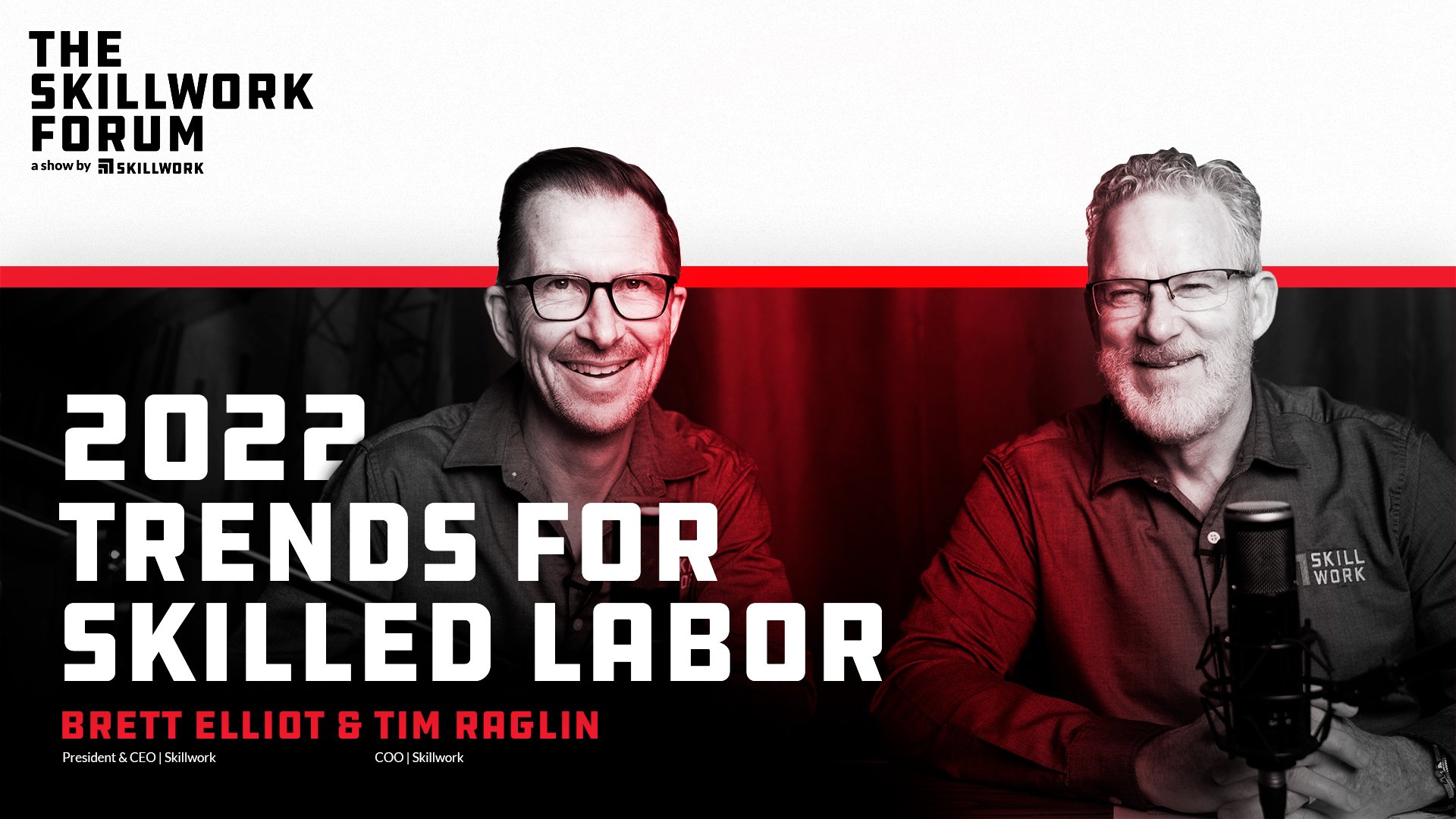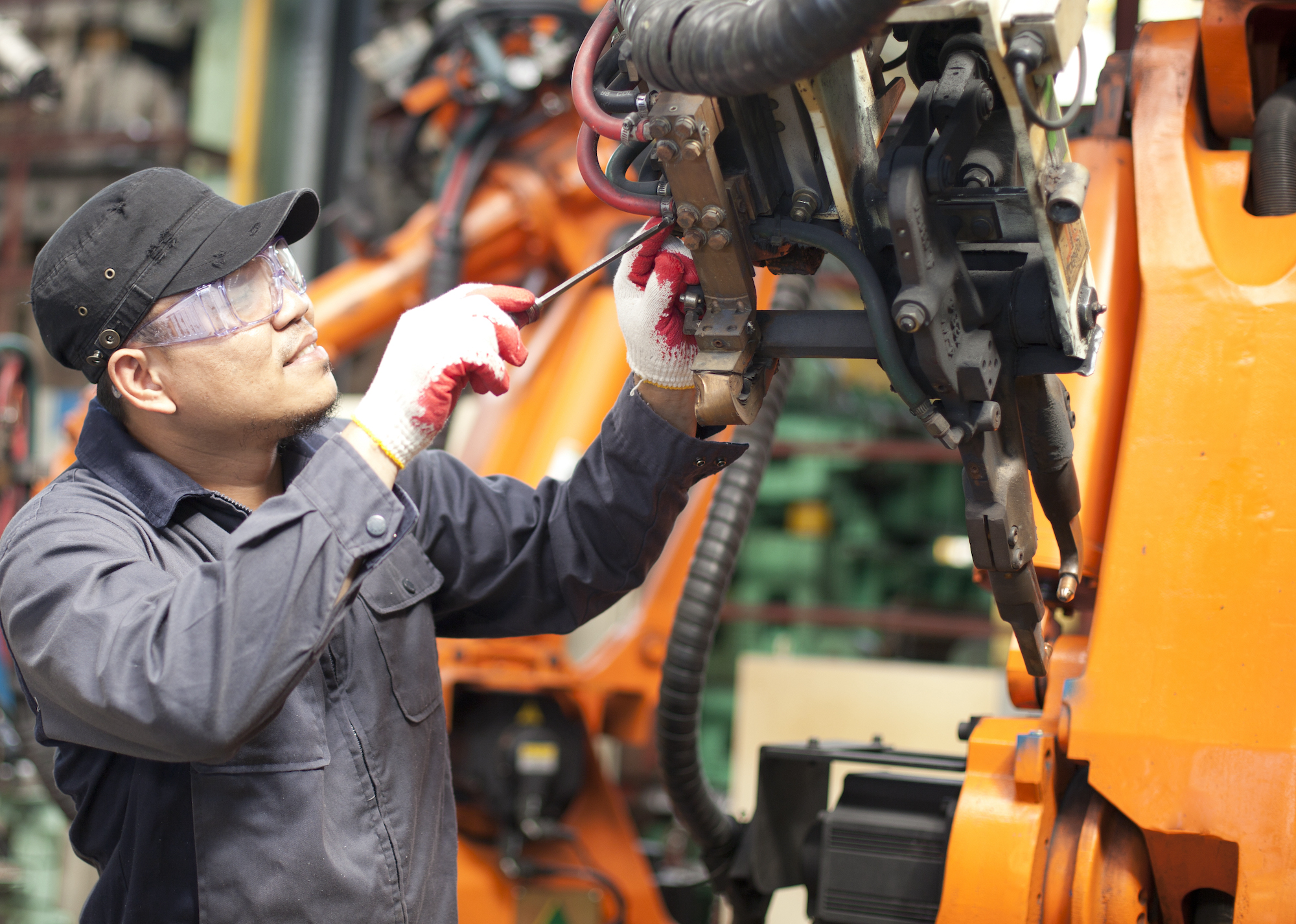8 Trends for Skilled Labor in 2022

In many ways, it’s the golden age for skilled workers. There is high demand for trade labor jobs, pay is on the rise, and the recent infrastructure bill will provide many opportunities for workers. However, the labor shortage is the biggest challenge most business leaders in the trade industries face today.
In this article we will go over eight trends for the skilled trades in 2022 for both trade employers and skilled trade workers.
2022 Trends for Skilled Labor by Skillwork (Click here for part 2)
Labor shortages from the past years will continue and likely accelerate
Business leaders hoping for relief from their labor shortage woes will, unfortunately, be disappointed in 2022. The labor shortage will continue to be a significant challenge for businesses—though this can be a major benefit to skilled trade workers, whose skills are in high demand. Businesses need to find ways to be competitive to attract, hire, and retain quality tradesmen.
For some, it will necessitate a change in mindset to address this labor shortage, since being short-staffed puts immense stress on the current workforce. Consider supplementing your current team with skilled temporary labor to fill the gaps in the most acute phases of the shortage.
Another component that will add to labor shortages is vaccine mandates and OSHA regulations, which motivate some workers to remain at home or be more selective about their jobs. Regardless of where businesses stand on those factors, the decisions made will have an impact on the workforce.
Baby boomers will continue to leave the workplace
The “Baby Boomer Exodus” has been happening for a while now, and 2022 will be no different. Currently, 1/3 of trade workers are over the age of 50—and as they reach retirement age or choose to leave the workforce for safety reasons, there aren’t enough young people ready to take their place. This leaves a growing gap of workers and puts pressure on businesses who are looking to find skilled workers and the workers who have to deal with the added stress of a short-staffed work environment.
Losing baby boomers is a significant “brain drain” for companies who don’t plan ahead and intentionally get their younger workers trained by their more experienced counterparts. It’s critical that one of the things you consider for 2022 is how to keep the knowledge, experience, and talent in your company as the older workforce retires.
Additionally, COVID made many near-retirement boomers who may have worked another few years leave early for health and safety reasons. This accelerated the labor gap in the skilled trades that many of us knew was coming. However, if you had a 5 or 10 year plan to combat the shortages in experience, COVID pushed that timeline up to now.
The effects of growing demand for workplace flexibility on your business
As the demand for workers remains high, many tradesmen have realized that they have more options for work than ever before. Workers are looking for flexibility in the workplace—and if you want to be competitive in the hiring process, it’s vital that you offer that. However, it’s equally important that in your pursuit of hiring new workers with bonuses, extra time off, etc., that you don’t forget the steady employees who have been at your organization all along.
Traditional skilled labor jobs have had set shifts, days, times—but now it needs to be more flexible. This could look like split shifts, flexible PTO, swappable shifts, or even job sharing. Companies don’t have the luxury of not changing if they want to hire and retain skilled trade workers in today’s climate.
How to deal with replacement in the workplace
Replacement is what happens when employees leaving outpaces your projections for expected attrition. There are projections for 2022 that estimate up to 2/3 of job openings are for replacing a worker who left for the same or adjacent occupation. Some of this may be due to workplace stressors, or experienced employees not getting the same preferential treatment as new hires.
If companies aren’t careful, they may find themselves losing talent they already had while focusing on finding new talent to fix their staffing challenges. With the labor market as competitive as it is, tradesmen may easily find better job opportunities than their current position. Some companies actively recruit from their competitors. Bottom line—you have to be prepared.
Consider what you can do to keep your skilled tradesmen happy and satisfied where they are today—you should always be “recruiting” internally even while you look for additional talent elsewhere. Loyalty is a two-way street, in that companies need to be loyal to their workers just as much if not more so than the loyalty they want from their team.
Fourth Industrial Revolution, automation, and the changing landscape for workers
The Fourth Industrial Revolution is well underway and things like automated machinery, predictive maintenance, AI, interconnected systems, and cloud technology will have an enormous impact on the trades.
Some of these changes are driven by the labor shortages—manufacturing plants can’t find front line workers to keep things moving, and they adapt with automated technology to address that gap. However, that raises the bar on the skills required for workers who are able to run and maintain that equipment.
This means that workers will have to update their skillsets to be a good candidate for jobs going forward. Companies are looking for higher skill levels—a smart skilled worker will take advantage of that to position themselves in the best possible way.
There’s great opportunity for tradesmen who get additional training, certifications, and experience in 2022. We also encourage companies to provide options for upskilling for their employees instead of looking externally for those advanced skills.
Rising costs of raw materials and inflation fears will impact the labor market
It’s no secret that the cost of raw materials is rising, and that will continue in 2022. This not only affects businesses’ bottom line, but will also be a major factor in accelerating the skilled worker shortage. Companies need to start thinking ahead when it comes to their costs and wages to prepare for the impact inflation will have on their business. Inflation will exacerbate the skilled trade challenges because you’ll have to pay higher wages to keep workers.
Not only does inflation affect businesses, but the skilled worker needs to be aware and prepared for what that will do to their wages and their buying power. Workers will need higher wages than last year in order to be able to afford the same things they did before. This will increase job competitiveness as well.
Supply chain backlog’s continued effect on businesses
We’re hearing about it all over the news, but the supply chain backlog is affecting everyone across all industries in America. COVID put immense pressure on the trades and now, companies are playing catch-up for the months lost to the pandemic. Manufacturing plants will continue to be the most impacted by this trend in 2022.
Even just the shortage of workers for offloading cargo ships, longshoremen and truck drivers is having a massive domino effect on the supply chain. It will likely get worse before it gets better, so it’s critical that companies anticipate this challenge so they can tackle it effectively.
The impact of the infrastructure spending bill on the construction sector
While it seems like a great solution to create new opportunities, jobs, bridges, airports, highways, and other infrastructure projects, it comes with its own challenges. The trades don’t have enough labor to do the projects going on now, so doubling the demand will only exacerbate the shortages.
The construction sector will experience the worst of these challenges. Companies will need to think outside the box to find, attract, and keep quality talent.
At the end of the day, it’s vital to be aware so you can prepare for the coming year.
For businesses, this means being strategic: anticipating and planning for retiring baby boomers, increasing workplace flexibility options, actively recruiting your current team and enticing them to stay, all under the understanding that you’re dealing with these challenges on top of unprecedented labor shortages. It’s not an impossible road to be successful, but you’re going to need to think outside the box to come out on top.
For skilled tradesmen, this means understanding that your skills and expertise need to evolve to remain competitive, anticipating inflation’s effect on wages and purchasing power, and enjoying the freedom of multiple job opportunities in this year’s high-demand labor market.
We believe America shines brightest when things are difficult. 2022 will continue to be a challenge like previous years, but this brings opportunity for innovation and leaders to emerge from those challenges.
—
